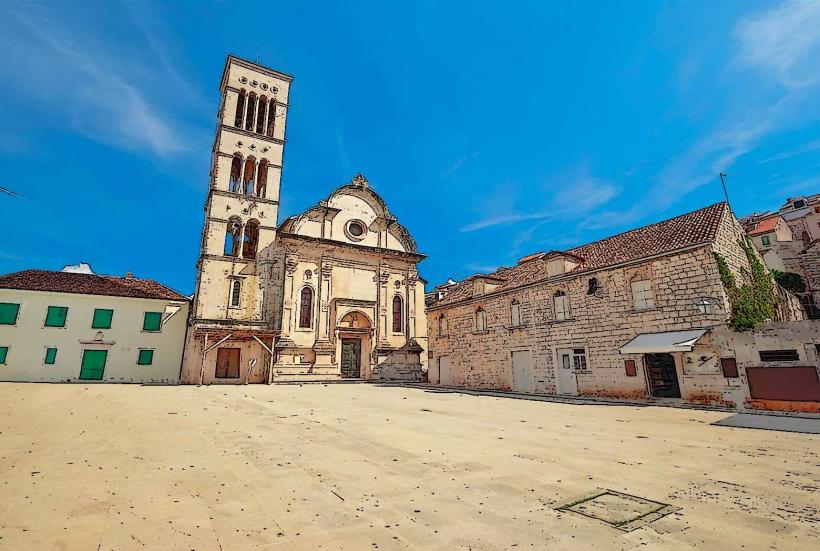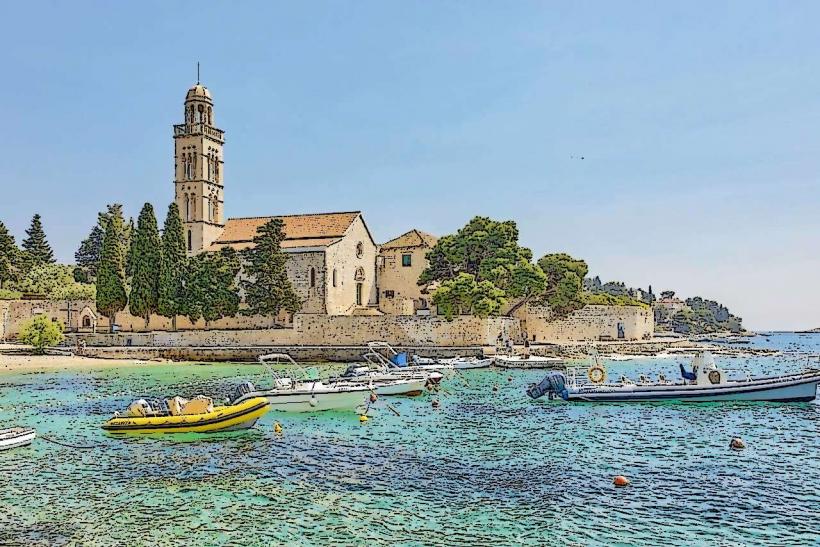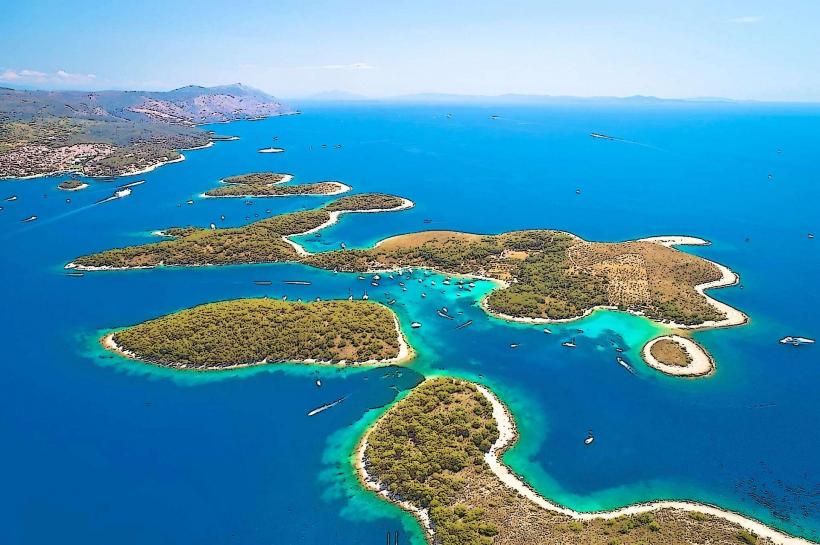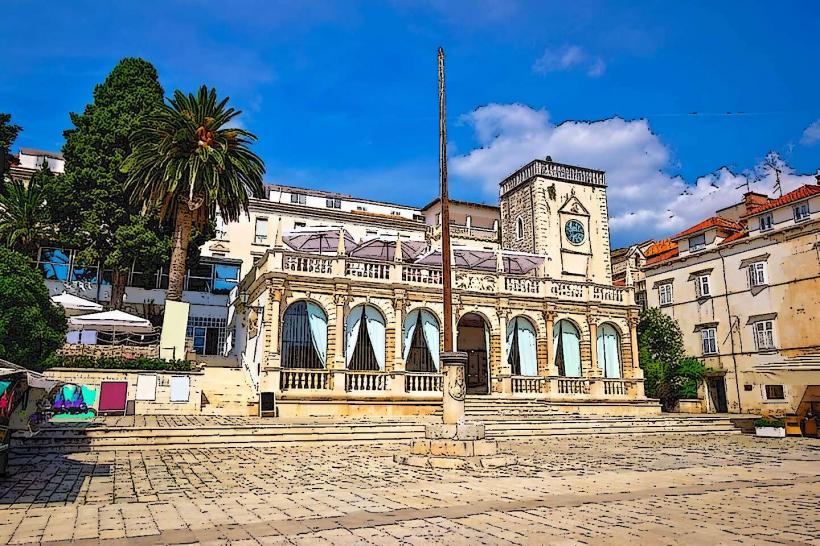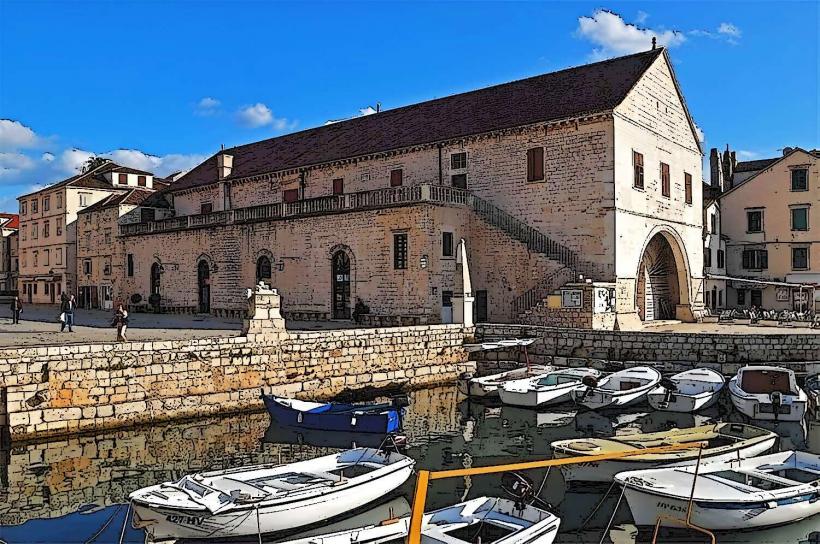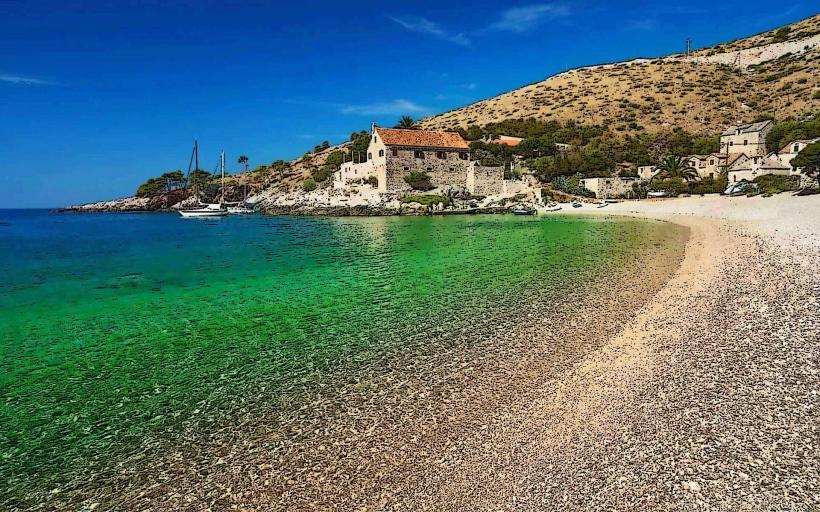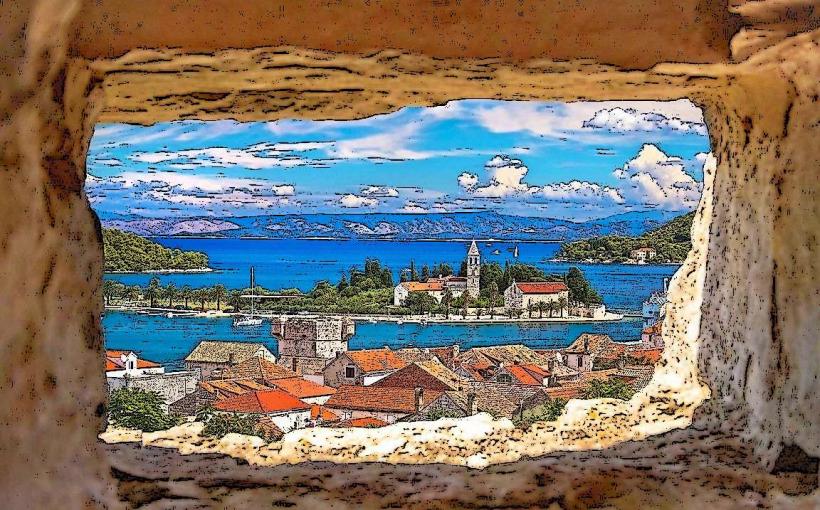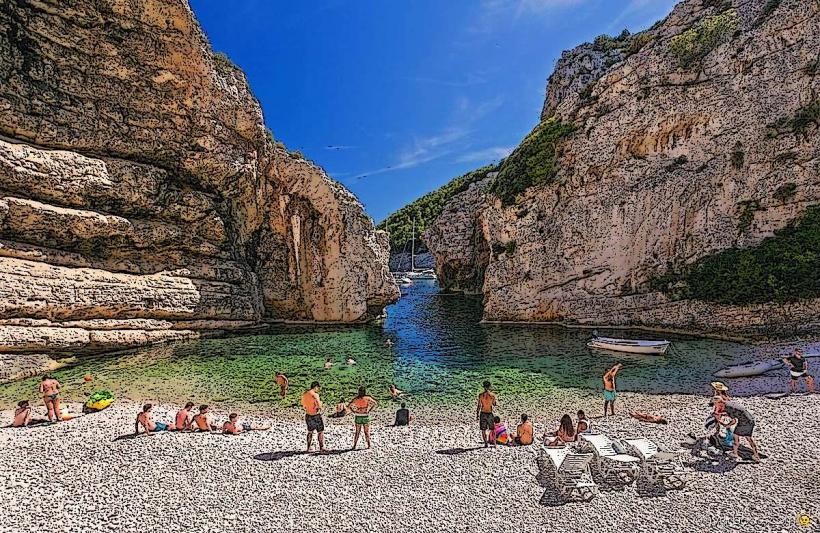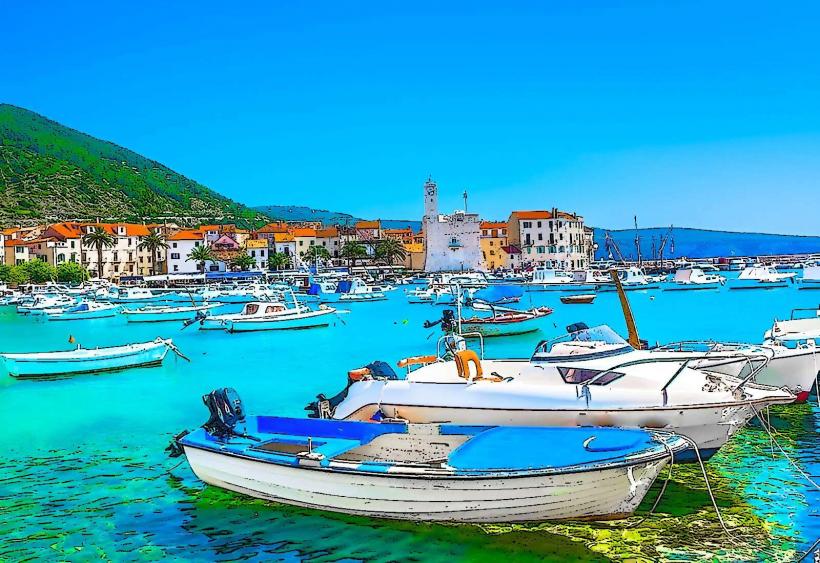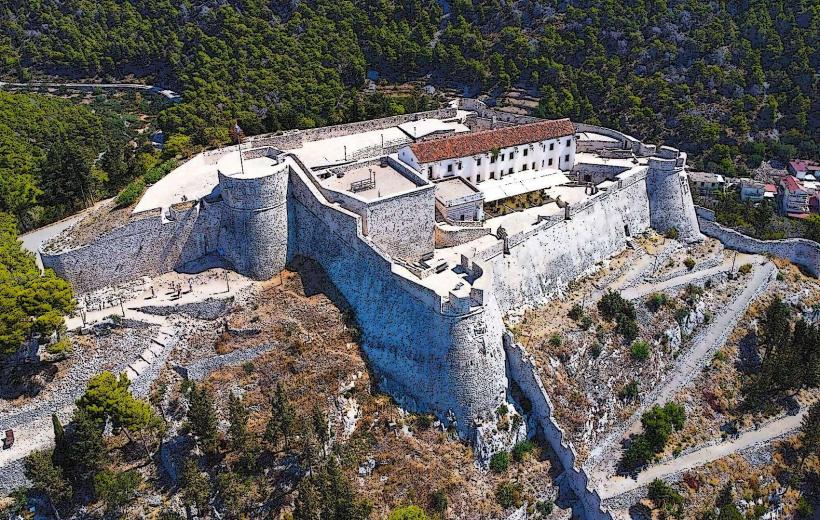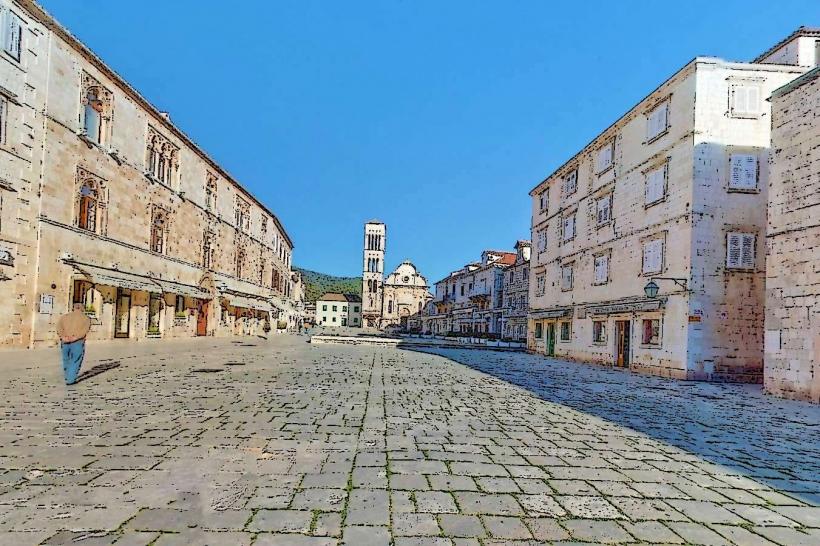Information
City: HvarCountry: Croatia
Continent: Europe
Hvar, located in the central Dalmatian group of islands in Croatia, is renowned for its stunning beauty, vibrant nightlife, and rich history. Often referred to as the "queen of the Dalmatian islands," Hvar is famous for its sunny climate, lush landscapes, and luxurious atmosphere. Here’s a detailed look at Hvar:
Geography and Setting
- Island Location: Hvar is the fourth-largest island in Croatia, situated in the Adriatic Sea. It lies to the southwest of Split and is easily accessible by ferry.
- Natural Beauty: The island is characterized by rolling hills, vineyards, olive groves, and fields of lavender. Its rocky coastline is dotted with picturesque beaches, secluded coves, and charming islands nearby, such as the Pakleni Islands.
- Climate: Hvar enjoys a Mediterranean climate with long, hot summers and mild winters, making it a popular year-round destination for tourists seeking sunshine and outdoor activities.
City Layout and Neighborhoods
- Hvar Town: The island’s main settlement, Hvar Town, is a bustling hub with a blend of historical architecture, vibrant squares, and luxury establishments. The town’s waterfront is lined with palm trees, cafes, and luxury yachts, contributing to its glamorous image.
- Old Town: The old town of Hvar is known for its narrow cobbled streets, medieval walls, and Renaissance architecture. Key landmarks include the 16th-century St. Stephen's Square (Trg Sv. Stjepana), the Hvar Cathedral, and the Fortica Fortress.
- Pakleni Islands: Just off the coast of Hvar Town, the Pakleni Islands are a group of small islands known for their pristine beaches, crystal-clear waters, and luxurious ambiance. They are a popular destination for day trips, boating, and relaxing in exclusive beach clubs.
Cultural Atmosphere
- Historical Significance: Hvar has a rich history, with traces of Greek, Roman, and Venetian influence throughout the island. It was founded by the Greeks in the 4th century BC and later became an important Venetian outpost.
- Cultural Heritage: The island's culture is deeply rooted in its history and local traditions, such as klapa singing (a traditional form of a cappella music), folk dances, and culinary practices.
- Festivals: Hvar hosts several cultural and music festivals, such as the Hvar Summer Festival, which celebrates local art, music, and theater. The island also has a rich theatrical history, with the Hvar Theatre (the oldest public theater in Europe) still active today.
- Lavender Fields: Hvar is known for its lavender production, and visitors can see lavender fields in full bloom in late spring and early summer. The island’s lavender products are a unique cultural and economic aspect of local life.
Culinary Scene
- Seafood and Mediterranean Dishes: Like many Croatian coastal towns, Hvar is famous for its fresh seafood. Grilled fish, squid, octopus, and shellfish are often served in local restaurants. Traditional Dalmatian dishes such as pašticada (stewed beef), buzara (seafood stew), and blitva (Swiss chard with potatoes) are also widely enjoyed.
- Island Wines: Hvar has a long tradition of wine production. The island’s warm climate and rich soil make it an ideal location for growing grape varieties like Plavac Mali (a red wine) and Pošip (a white wine). Many local vineyards offer tours and tastings.
- Olive Oil: Hvar produces high-quality olive oil, a key ingredient in many local dishes. The island’s olive oil is recognized for its excellent taste and purity.
- Lavender and Honey: Lavender honey is another local specialty. The island’s lavender fields contribute to the creation of this fragrant and flavorful honey, which can be found in local markets.
Nature and Outdoor Activities
- Beaches and Swimming: Hvar is famous for its beautiful beaches, with both pebbly and sandy options. Popular beaches include those at Palmižana on the Pakleni Islands, Dubovica (a secluded cove), and Zlatni Rat beach on the southern side of the island.
- Water Sports: The island offers excellent opportunities for water sports, including kayaking, windsurfing, sailing, and diving. The crystal-clear waters around Hvar make it a fantastic destination for snorkeling.
- Hiking and Biking: Hvar’s rugged terrain offers numerous hiking and biking trails, many of which offer panoramic views of the island’s coastline, vineyards, and olive groves. Popular hiking routes lead to the St. Nicholas Peak, the highest point on the island, and the Fortica Fortress.
- Cycling Tours: Hvar is also a great place for cycling tours, whether you prefer leisurely rides through the island’s scenic villages or more challenging off-road routes.
Nightlife and Social Scene
- Vibrant Nightlife: Hvar is well-known for its lively nightlife scene, attracting visitors looking for glamorous bars, beach clubs, and nightclubs. The town’s main square and harbor area are lined with trendy bars offering cocktails, music, and a lively atmosphere.
- Beach Clubs: The Pakleni Islands are home to several chic beach clubs and lounges, where visitors can relax by day and party by night. Clubs like Carpe Diem and Hula Hula are famous for their lively ambiance and stunning seaside settings.
- Sunset Bars: Hvar is known for its spectacular sunsets, and many bars and restaurants along the coast offer stunning views of the sun sinking into the Adriatic Sea. The popular Kiva Bar and the Rooftop Bar at the Adriana Hotel are great spots to enjoy the sunset with a cocktail.
Daily Life
- Local Markets and Shops: Hvar’s daily life revolves around its markets and local shops. The town has an open-air market where visitors can buy fresh produce, seafood, herbs, and local products such as honey, lavender, and olive oil. The town also has boutique shops selling fashion, jewelry, and souvenirs.
- Traditional Crafts: Hvar is known for its craftsmanship, especially lavender-based products, handmade jewelry, and local textiles. Visitors can find artisans selling their goods in the town center.
- Tranquil Villages: While Hvar Town is bustling with tourism, the island’s smaller villages, such as Vrboska, Jelsa, and Stari Grad, offer a quieter and more traditional island experience. These areas are perfect for those seeking a slower pace of life.
Transportation and Connectivity
- Ferries and Boats: Hvar is easily accessible by ferry from Split, Dubrovnik, and other nearby islands. The main ferry terminal is in Hvar Town, with services connecting to the mainland and neighboring islands.
- Boats and Yachts: Due to Hvar’s reputation as a glamorous destination, many visitors arrive by private boat or yacht, which can dock in the town’s harbor or in one of the many secluded coves along the coast.
- Cycling and Walking: Hvar Town is small enough to explore on foot, but cycling is a great way to explore the island at a leisurely pace, especially in the rural areas.
- Car Rentals: While public transportation is limited, renting a car or scooter is a convenient way to explore the island’s remote areas and beaches.
Climate and Seasonal Life
- Mediterranean Climate: Hvar’s Mediterranean climate makes it a year-round destination. Summers are hot and dry, with temperatures reaching the mid-30s°C (90°F), while winters are mild, with temperatures rarely dropping below 10°C (50°F).
- Tourism Seasons: The peak tourist season is in the summer, when the island’s beaches, nightlife, and cultural events attract large numbers of visitors. Spring and autumn offer pleasant weather and fewer crowds, making it a great time to visit for hiking, cycling, and sightseeing.
- Winter Calm: In the winter months, Hvar becomes quieter, with many businesses closing for the off-season. However, the mild climate and peaceful atmosphere can make it a charming time to visit for those seeking solitude.
Modern Hvar
- Luxury Tourism: Hvar is known for its upscale tourism, with luxury resorts, private villas, and high-end dining options. The island attracts a cosmopolitan crowd, including celebrities and international jet-setters.
- Eco-Tourism: While Hvar has developed into a high-end destination, there is a growing focus on sustainable tourism. Many local businesses emphasize eco-friendly practices, and efforts are being made to preserve the island’s natural beauty and cultural heritage.
Unique Character
- Glamour and Elegance: Hvar combines natural beauty with a chic and glamorous lifestyle, attracting both those looking for a lively social scene and those seeking tranquility in a beautiful setting.
- Rich History and Culture: Hvar's mix of Greek, Roman, and Venetian history gives the island a unique cultural character. Visitors can enjoy a blend of historic exploration, local traditions, and modern luxury.
- Vibrant and Diverse: Whether it’s lounging at a beach club, exploring ancient sites, or hiking in the hills, Hvar offers a wide range of experiences for all types of travelers.
Hvar is a dazzling Mediterranean destination that offers a perfect mix of history, culture, natural beauty, and vibrant social life. Whether you're exploring the charming old town, sipping wine by the sea, or enjoying the island’s stunning landscapes, Hvar promises a memorable experience.

